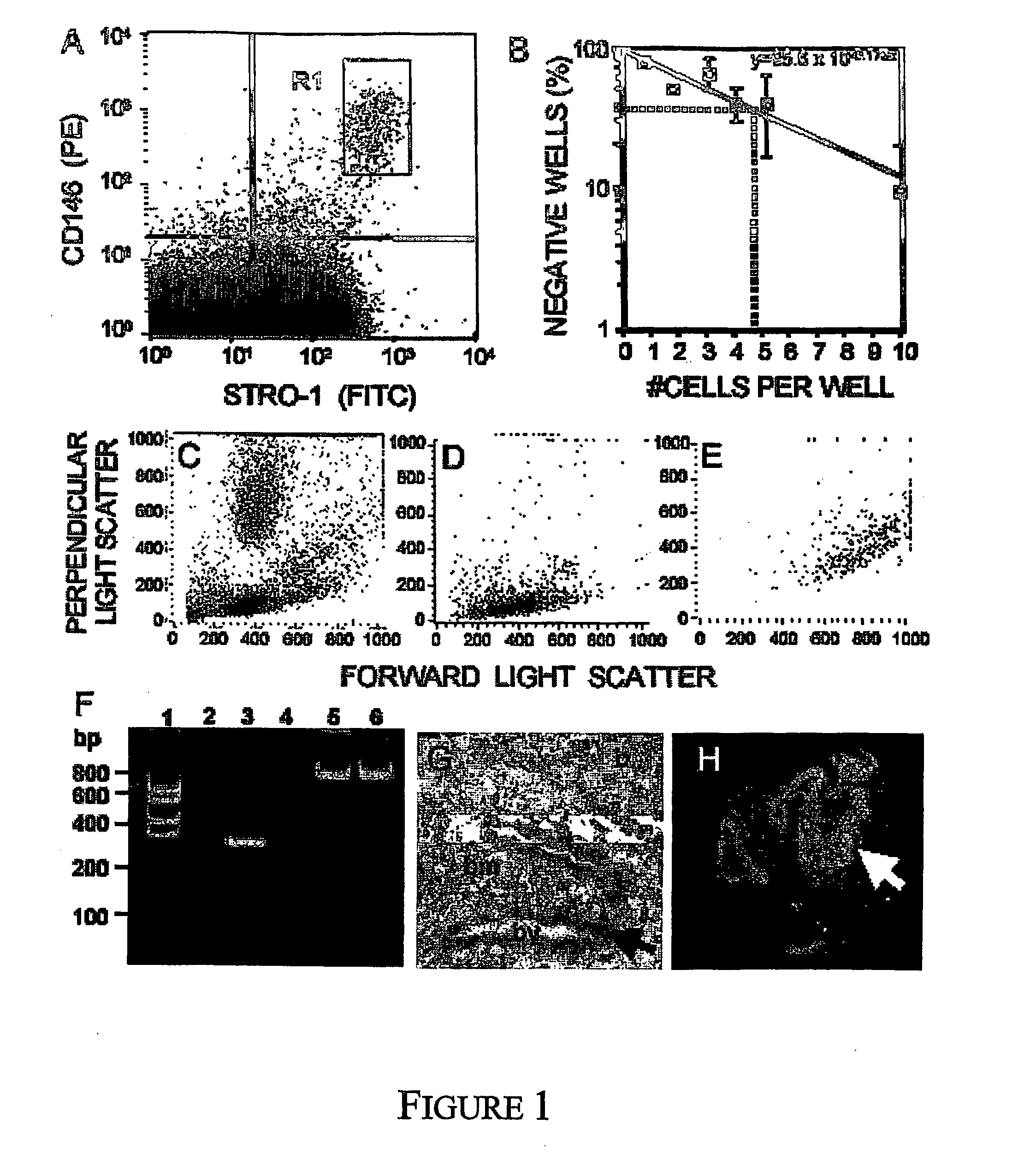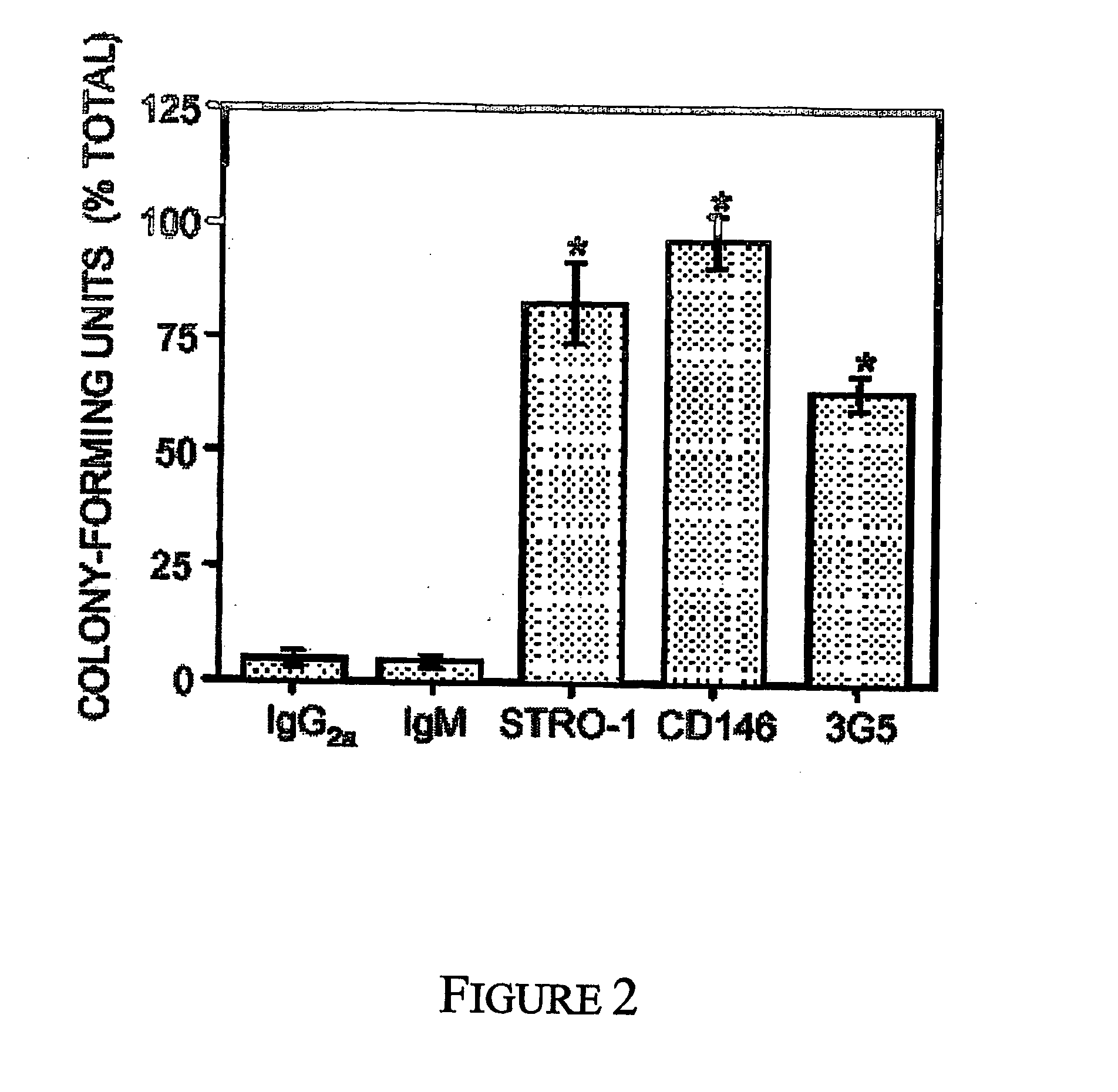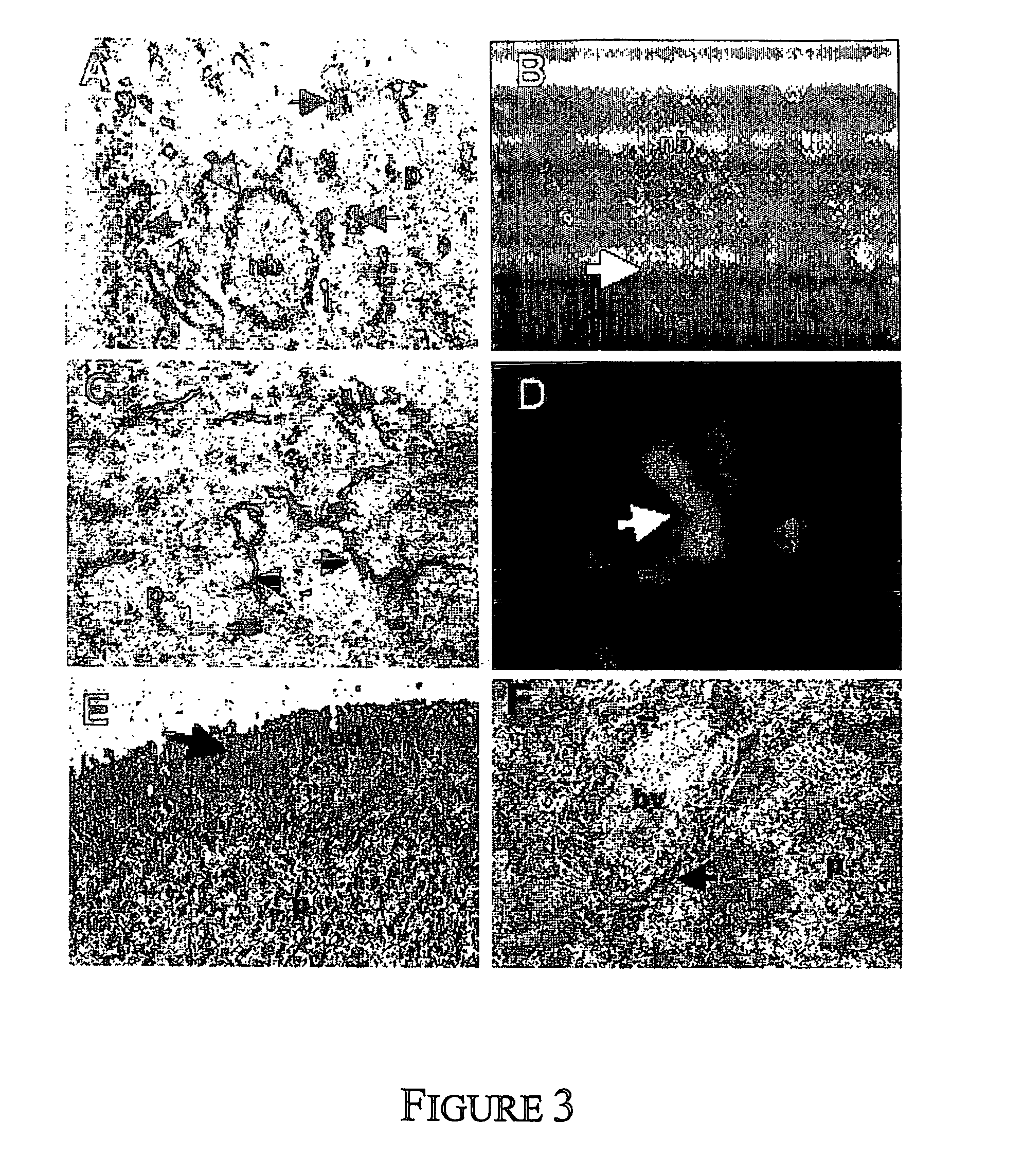Perivascular mesenchymal precursor cell induced blood vessel formation
- Summary
- Abstract
- Description
- Claims
- Application Information
AI Technical Summary
Benefits of technology
Problems solved by technology
Method used
Image
Examples
example 1
Isolation and Expansion of Precursor Cells
[0098] Stem cell niches identified in a number of different adult tissues including skin, hair follicles, bone marrow, intestine, brain, pancreas and more recently dental pulp, are often highly vascularized sites.(1) The maintenance and regulation of normally quiescent stem cell populations is tightly controlled by the local microenvironment according to the requirements of the host tissue.(2,3) Both the supportive connective tissues of bone marrow and dental pulp contain stromal stem cell populations with high proliferative potentials capable of regenerating their respective microenvironments with remarkable fidelity, including the surrounding mineralized structures of bone and dentin.(4,5) In the postnatal organism, bone marrow stroma exists as a loosely woven, highly vascularized tissue that supports and regulates hematopoiesis.(6,8) At a time when many tissues have lost or decreased their ability to regenerate, adult bone marrow retains...
example 2
Adult Human Bone Marrow MPC are Distinct from Stromal Precursor Cells, Haematopoietic Stem Cells and Angioblasts by Their High Expression of the STRO-1 Antigen and Lack of CD34 Expression
[0129] Postnatal bone marrow appears to be a hub of residential stem and precursor cell types responsible for blood cell formation (haematopoietic stem cells), endothelial development (angioblast), and connective tissue / stromal differentiation (stromal precursor cells / bone marrow stromal stem cells / mesenchymal stem cells). Recent work by our group (Gronthos et al. 2003; Shi and Gronthos 2003) has, for the first time, purified and characterised human multipotential bone marrow mesenchymal precursor cells (MPC) based on their high expression of the STRO-1 antigen and by their co-expression of the immunoglobulin superfamily members, VCAM-1 (CD106) and MUC-18 (CD146). Early studies by Simmons and Torok-Storb (1991a and b), have shown that bone marrow-derived STRO-1+ stromal precursor cells, with the ca...
example 3
Identification of Multipotential MPC in Different Human Tissues
[0133] While the existence and precise location of MPC in different tissues is largely unknown, we have recently demonstrated that MPC appear to reside in a perivascular niche in human bone marrow and dental pulp tissues (Shi and Gronthos 2003). These observations were based on a combination of immunohistochemical and immunoselection methods to identify and isolate different MPC populations based on their expression of the mesenchymal stem cell marker, STRO-1, the smooth muscle and pericyte markers, CD146, alpha-smooth muscle actin and the pericyte specific marker, 3G5. We have now extended these studies demonstrating the co-localization of STRO-1 / CD146, STRO-1 / alpha-smooth muscle actin, and 3G5 / CD146 antigens in a wider variety of tissues including heart, liver, kidney, skin, spleen, pancreas, lymph node (FIG. 8).
[0134] To confirm our earlier findings that MPC can be derived from non-bone marrow tissue such as dental ...
PUM
| Property | Measurement | Unit |
|---|---|---|
| Fraction | aaaaa | aaaaa |
| Fraction | aaaaa | aaaaa |
| Fraction | aaaaa | aaaaa |
Abstract
Description
Claims
Application Information
 Login to View More
Login to View More - R&D
- Intellectual Property
- Life Sciences
- Materials
- Tech Scout
- Unparalleled Data Quality
- Higher Quality Content
- 60% Fewer Hallucinations
Browse by: Latest US Patents, China's latest patents, Technical Efficacy Thesaurus, Application Domain, Technology Topic, Popular Technical Reports.
© 2025 PatSnap. All rights reserved.Legal|Privacy policy|Modern Slavery Act Transparency Statement|Sitemap|About US| Contact US: help@patsnap.com



